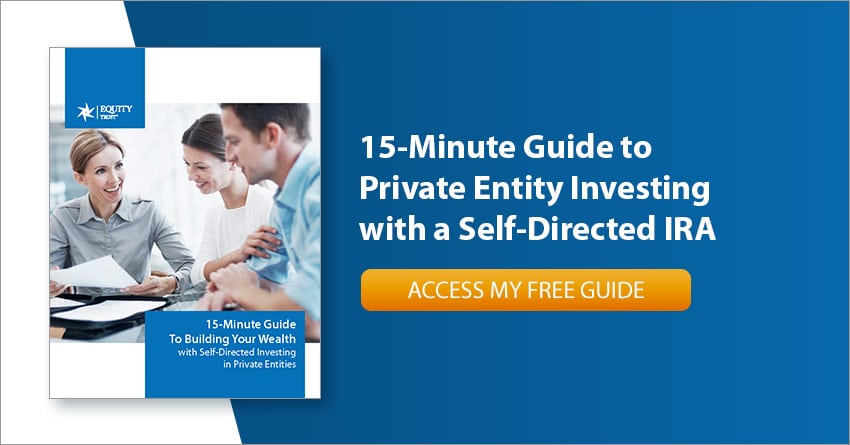Many investors think they’re limited to stocks, bonds, and mutual funds when it comes to saving for retirement. However, you have the freedom to invest in private equity, private entities, LLCs, private placements, hedge funds, venture capital, startups, offshore funds, and more – with a self-directed IRA.
Given the volatility of the stock market, investors seeking diversification from the public markets may find a self-directed account to be beneficial. Investments grow in a tax-deferred or tax-free environment and you have the ability to choose exactly what you invest in, putting you in control of your future wealth.
Here’s how it works.
How to Invest in Private Equity with a Self-Directed IRA
To get started, open and fund your Equity Trust account. You can do this online through myEQUITY, or by contacting us to have an IRA Counselor walk you through the process.
Next, you’ll identify your investment opportunity in a private entity such as an LLC, LP, or C-Corp. It’s important that you perform due diligence on your potential investments before making any decisions.
These are the steps to completing a private equity or private entity investment using your account:
Step 1: Request Funds and Direct Your Investment
- Visit myEQUITY.com and navigate to Investment → Private Equity to begin the step-by-step Private Equity Wizard.
- Upload supporting documentation for LLC, LP or C-Corp.
- Sign documentation (eSignature is available) and ensure proper titling before sending. The correct titling is: Equity Trust Company Custodian FBO [Account name IRA, Roth IRA, etc.]








